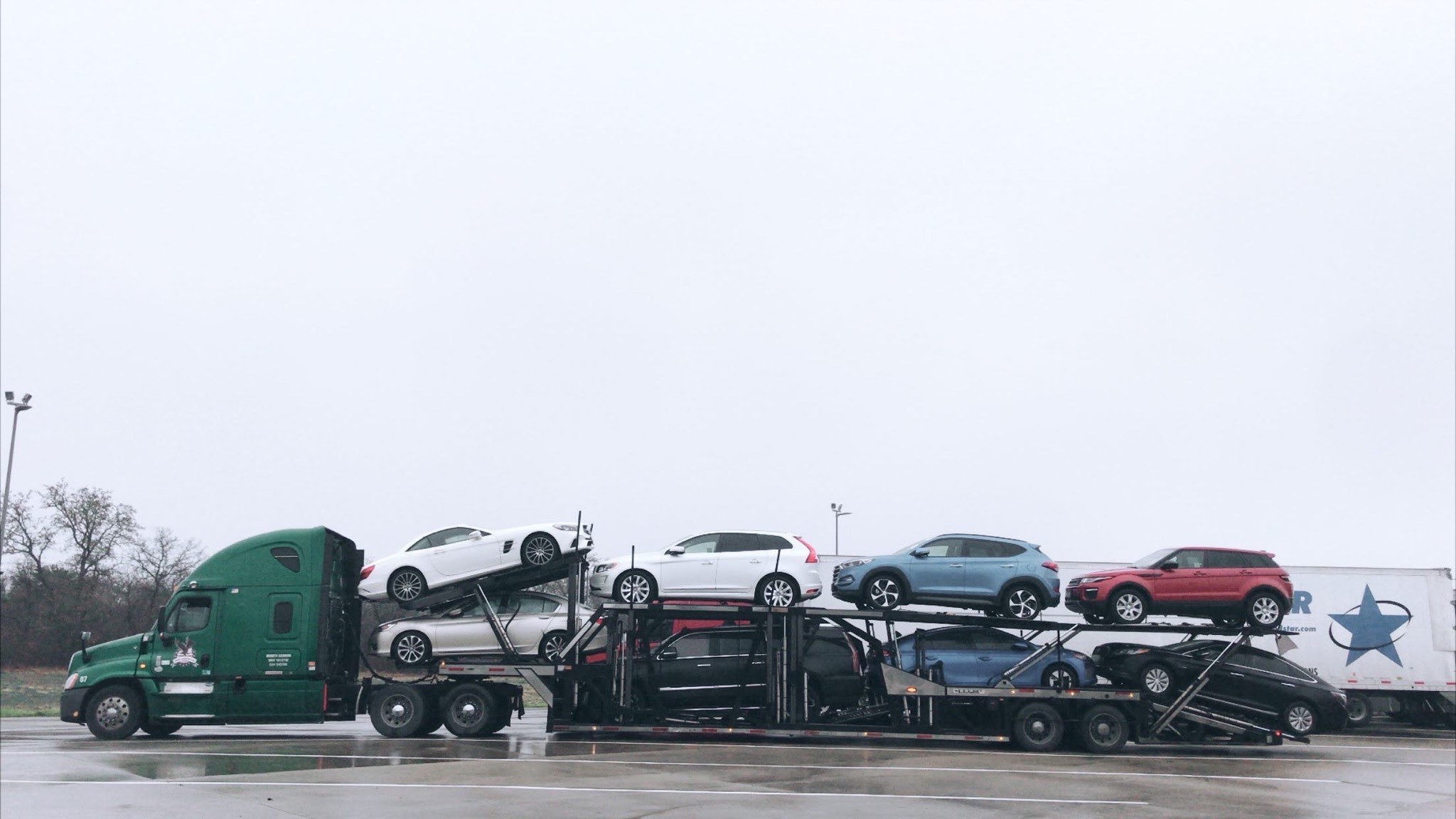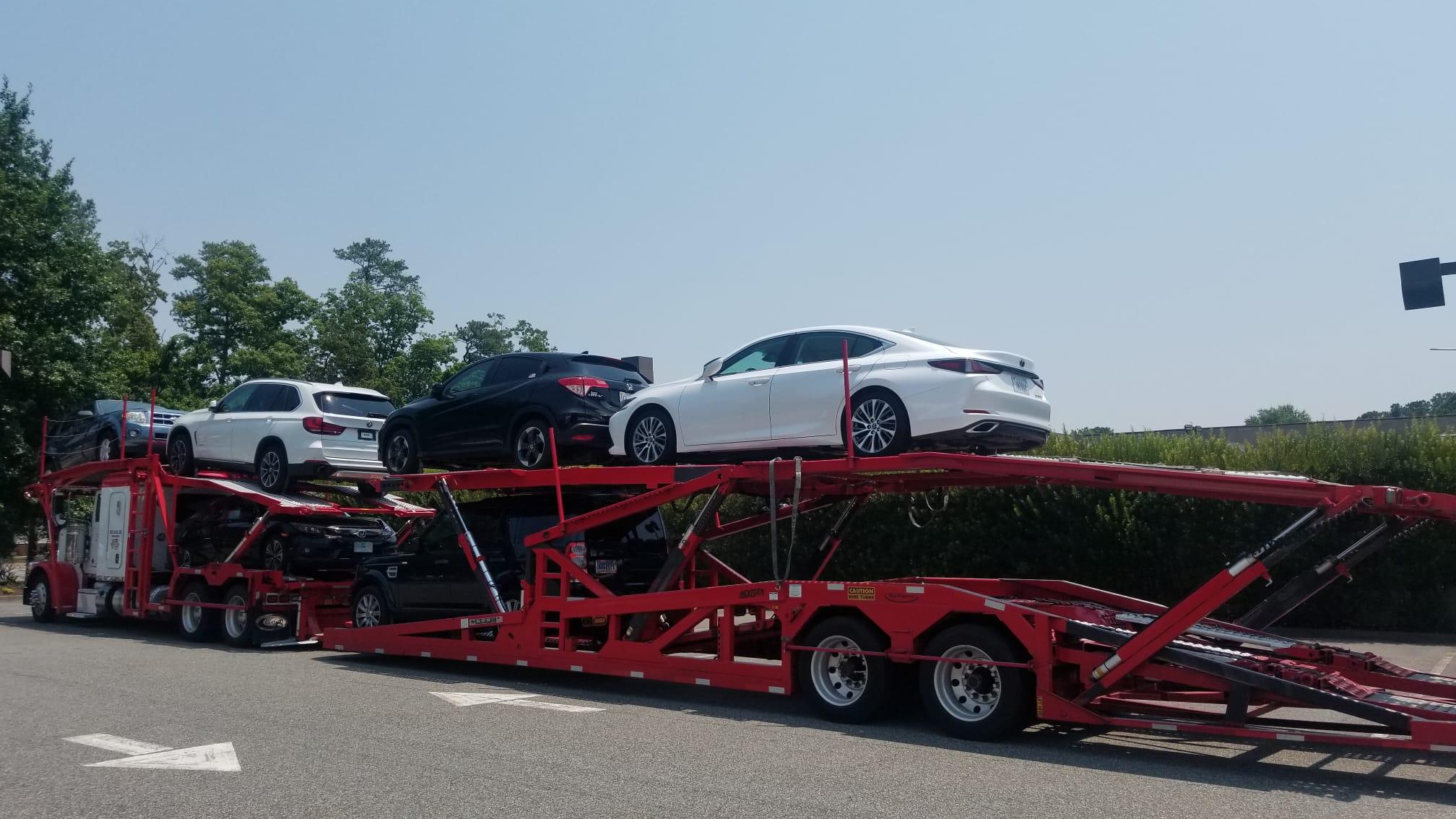You’re getting ready to move and you have almost everything in order. You’ve already made arrangements for an apartment, and notified the post office, tax agencies, and Social Security Administration of your address change. Everything on your moving checklist is done. There’s just one problem – you have no idea how you’ll get your car there.
You might be thinking of renting a tow dolly from U-Haul as it’s one of the cheapest ways to transport your car, but you still want to consider all your options. The biggest choice you’ll encounter is deciding between renting a tow dolly or a car carrier, and that’s exactly what this post is going to help you with.
Tow Dolly vs Auto Transport: Understanding the Differences
Before we get to the pros and cons of either option, let’s find out the differences between the two. This will give you an in-depth understanding of which one would best fit your needs.
1. HOW THEY WORK
A car dolly or tow dolly is a two-wheel trailer that will lift only the front wheels of your car. The rear wheels remain on the ground as you tow your car with a tow dolly. On the other hand, an auto transport company will use a car carrier, which is a four-wheel trailer that will lift your entire car off the ground.
2. VEHICLE COMPATIBILITY
A tow dolly is suitable for most front-wheel-drive vehicles as well as a few all-wheel drive, rear-wheel-drive, and four-wheel drive vehicles. However, there are certain weight restrictions so it wouldn’t be suitable for towing heavier vehicles. Also, in most cases, tow dollies don't work well for towing electric vehicles.
3. SETUP EFFORTLESSNESS
Hooking up your car to a tow dolly can be a bit complicated, especially if you’re new to it. You need to make sure that the drive wheels are extra secure so there’s no risk of accidents. This is important because when you tow a car with a tow dolly, you can’t apply the emergency brake to keep the car in place.
The setup is particularly complicated when you have to tow a rear-wheel drive. You might even need to take the drive shafts out due to front clearance issues. Alternately, you may also opt for flat towing for a more seamless setup.
The following video gives you some idea of how to safely load a tow dolly.
On the other hand, vehicle towing with a car trailer requires minimal effort from your end. The carrier company will typically load and unload the vehicle on your behalf, so it’s effortless for you.
4. VEHICLE WEAR AND TEAR
When you tow a car with a tow dolly, you leave the rear wheels on the ground, putting more weight on them as the front wheels are lifted. So there’s some risk of wear and tear on the tires over time. As such, it may not be the best way to tow a car long distance or to transport classic cars.
In addition, tow dollies can result in clearance issues with some vehicles that are low to the ground or long in the front. Some of the car components may get dragged while towing, causing damage to body kits, bumpers, and undercarriage parts.
With a car carrier, the entire vehicle is loaded onto a trailer, meaning there’s minimal risk of wear and tear on your tires. If it’s an open car carrier, however, there’s still some risk of minor dents and dings from road elements in transit, but these are generally covered by insurance.
5. COST
When it comes to cost, renting a tow dolly is generally the more affordable option. For example, renting a tow dolly from U-Haul typically starts from $98, while an auto transport from the same company costs around $118 or more.
However, there may be a few additional rental and fuel charges if you don’t have the vehicle to tow it with. Plus, most moving companies won’t rent out tow dollies unless you’re also renting a truck from them, so the cost of renting a tow dolly will be tacked onto your total bill.
There’s also the fact that pulling another vehicle behind a truck will significantly decrease your gas mileage. This means you could rack up your fuel expenses since you’ll need more gas than usual to cover the same distance.
6. SAFETY
One of the biggest car dolly towing issues is trailer sway, which is the fishtailing movement that occurs when you drive at a high speed. It’s one of the main causes of towing accidents, and is particularly risky when you’re towing your car during bad weather as the roads get slippery, making it even more difficult to control the vehicle.
A car trailer or carrier is a lot safer than tow dollies in this aspect, as the entire vehicle is loaded onto it. Since the driver only has to focus on controlling the vehicle they are driving, there’s less risk involved.
7. SPEED
Rental companies recommend that you maintain a slower-than-average speed during vehicle towing. This is mainly to ensure safety and prevent trailer sway as mentioned above. Having to maintain a slower driving speed significantly increases your transit time.
Car shipping carriers have some speed restrictions as well, but there’s no risk of trailer sway so they can go a bit faster than trucks with tow dollies.
8. MANEUVERABILITY
Maneuverability is another concern with vehicle towing. So you may be wondering – can you back up with a tow dolly? Although you technically can, it may be a bit challenging for inexperienced drivers. If you haven’t done it before, you may have a hard time backing up to set down the towed vehicle in the right place.
Car carriers do not have the same challenge. As the entire vehicle is loaded onto the carrier, the driver only has to control the vehicle they’re driving. This makes it much easier to back up and maneuver the carrier.
Tow Dolly: Pros and Cons vs Auto Transport
PROS
- It’s cheaper
- Good for short-distance towing
- Have access to your car during move
CONS
- Time-consuming setup
- Lower gas mileage
- Safety concerns
- Vehicle wear and tear
- Not for heavier vehicles
When You Should Consider Using a Tow Dolly
- Not ideal for long distances due to gas mileage and wear/tear.
- Best for short, in-state moves (e.g., moving across town).
- Cost-effective for short distances.
Auto Transport: Pros and Cons vs Tow Dolly
PROS
- It’s safer
- More effortless
- Less risk of wear and tear
- Suitable for heavier vehicles
- No additional mileage on car
- Best for cross-country transport
CONS
- More expensive
When You Should Consider Using a Car Shipping Carrier
- Best for cross-country moves.
- Use for heavier vehicles or those above tow dolly weight limits.
- Good for long-distance, effortless, and secure transport.
What is the maximum load capacity for an auto transport trailer?
When it comes to maximum load capacity, most auto transport trailers are designed to handle vehicles weighing up to around 5,290 pounds. This makes them ideal for safely transporting a wide range of standard cars, SUVs, and light trucks—just be sure to double-check your vehicle’s weight before booking your trailer. Keep in mind that exceeding this weight limit can compromise both safety and performance during your move
How long does it typically take to load a vehicle onto a tow dolly or auto transport?
Wondering how long it takes to get your vehicle loaded onto a tow dolly or car carrier? For most people, the process is surprisingly quick—typically 15 minutes or less, especially if you’re familiar with the setup. If it’s your first time, you might spend a bit longer making sure everything is secure, but experienced movers and rental companies like Penske, Budget, and local independent outfits have streamlined the process to keep you moving with minimal delay.
Of course, factors like vehicle size, type, and your own comfort with the equipment can influence the actual time required. Still, whether you're going the DIY route or having a professional lend a hand, getting your car safely loaded doesn’t have to be an all-day affair.
What are the proper steps for loading a vehicle onto an auto transport trailer?
Proper Steps for Loading a Vehicle onto an Auto Transport
If you’re new to using an auto transport, don’t worry—it’s straightforward once you know the steps. Here’s a quick walkthrough to keep things smooth and safe:
- Drive your vehicle carefully onto the trailer ramps until all four wheels are positioned on the carrier. Take it slow to avoid scraping your bumper or undercarriage.
- Engage the parking brake once your car is completely on the trailer. This adds a layer of security and prevents any unwanted rolling.
- Raise the side fenders to their locked position. This provides a barrier and helps protect your vehicle’s doors during transport.
- Slide the loading ramps back into place and latch them securely. Double-check the latch before moving on—this keeps the ramps stowed and won’t rattle loose on the highway.
- Secure the vehicle with straps or chains according to the trailer instructions. Make sure everything is tightened down snugly.
By following these steps, you’ll ensure your car is prepped for a safe ride—whether it’s across the state or all the way to your new city.
What are the benefits of towing a vehicle instead of driving it?
So, why go through the trouble of towing your car instead of just getting behind the wheel and hitting the road? There are a few compelling reasons:
- Preserves Your Vehicle: Towing spares your car from racking up extra miles, which means less wear and tear on the engine and tires—especially important if you have a prized Honda Civic or a classic Ford Mustang.
- Saves on Gas: Let’s face it—fuel prices aren’t what they used to be. By towing, you’re not running two engines and doubling your fuel expenses.
- No Need for a Convoy: If you’re moving solo, towing is a game-changer. No need to wrangle a second driver or convince a reluctant friend with the promise of pizza and gas money.
- Simplifies Planning: Skip the trouble of coordinating routes, pit stops, and schedules for multiple drivers. Everything arrives together, hassle-free.
How can I get a price quote for renting a car dolly or auto transport trailer?
To get a price quote for renting a car dolly or an auto transport trailer, there are several convenient ways to do it. Start by checking the websites of popular moving companies and rental services—most let you enter your trip details and vehicle information to instantly view rates. You can also call local rental locations directly, whether it’s a well-known nationwide service or a reliable regional provider, to ask about availability and current pricing for your specific route and vehicle type.
If you prefer an in-person approach, stopping by a location nearby will let you speak with staff who can walk you through your options and provide a personalized quote. Just remember to have your vehicle make, model, and your intended route handy since these details will affect the final cost.
Are vehicle pre-tow inspections included with equipment rentals?
When you rent towing equipment, most reputable providers include a complimentary pre-tow inspection with your rental. This means that before you head out, your chosen rental location will take the time to check over both your vehicle and the towing setup to ensure everything is safe and road-ready.
This inspection is typically part of the service at no extra cost. Providers like Penske, Budget, and Enterprise generally offer this check to give you peace of mind, making sure your car and the equipment meet all necessary requirements for your trip. It's a valuable step to help prevent surprises once you're on the road.
Tow Dolly vs Auto Transport: Which Should You Choose?
The final choice completely depends on your needs. As quickly summarized above,
- Tow dolly: Short distances, lighter cars.
- Car carrier: Long distance, heavier cars.
Go with a car carrier for cross country vehicle transport and for cars that are heavier than what a tow dolly can carry.
It’s not always wise to go with the cheapest option, as you’ll be sacrificing a lot in the process – including safety and vehicle condition. So make sure you thoroughly assess your requirement and choose accordingly.



